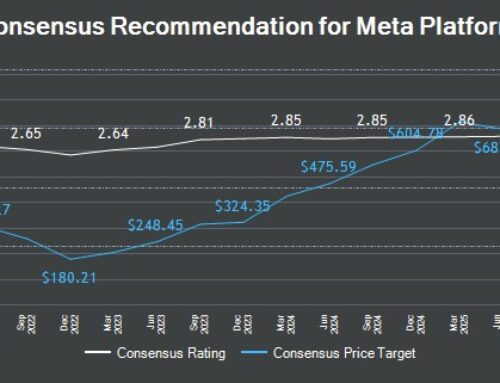10 Reasons Marijuana Stocks Were Pummeled in 2019
December 29, 2019
The green rush was a veritable trash fire this year..
This was supposed to be the year that marijuana stocks went from being perceived as a speculative investment to something that long-term investors would be proud to add their portfolios. And it certainly looked as if that would be the case after the first quarter. Through the end of March, the Horizons Marijuana Life Sciences ETF, the first cannabis-focused exchange-traded fund, had gained more than 50% for the year.
Then everything fell apart.
With few exceptions, cannabis stocks have been in an unforgiving downward spiral since the beginning of April. The vast majority of pure-play cannabis stocks find themselves down by a substantial double-digit percentage in 2019.
What went wrong? Let’s take a closer look at the 10 reasons pot stocks were pummeled this year.
1. Health Canada’s license application backlog
To start with, Canada’s supply was constrained by regulatory agency Health Canada’s inability to review and approve cultivation, processing, and sales licenses in a timely manner. Even though the agency updated its cultivation license application process midyear, it’ll be many more quarters before it’s successfully worked through its backlog. In the meantime, companies like Aphria have been stuck waiting more than 18 months to get approval to plant cannabis at its flagship Aphria Diamond campus.
2. Ontario’s slow physical dispensary rollout
Another regulatory snafu in Canada comes from Ontario. The province that’s home to nearly 40% of the country’s population has slow-stepped the rollout of physical dispensaries with its lottery system of awarding licenses. As a result, just two dozen cannabis stores were open a full year after recreational sales commenced. Ontario’s inability to get an adequate retail network up and running has led to significant production cuts from the likes of Aurora Cannabis (NYSE:ACB), HEXO (NYSE:HEXO), and Green Organic Dutchman (OTC:TGODF)
3. Canada’s delayed launch of derivatives
To pick on Health Canada again, the regulatory agency failed to get its ducks in a row when it comes to the launch of derivative pot products, such as edibles, vapes, infused beverages, topicals, tinctures, and concentrates. Wall Street was expecting these high-margin products to be on dispensary shelves by no later than October, but only the rules governing these products went into effect then. Derivatives only began hitting dispensary shelves this past week, a good two months later than anticipated at the beginning of the year.
4. High U.S. tax rates
Meanwhile, in the U.S., cannabis companies have been cursing the high tax rates (in select states) associated with legal-channel sales. In California, for instance, a state and local tax, 15% excise tax, and wholesale tax, are factored into the final sales price. Not to mention, other expenses, such as laboratory quality testing, are being added to retail pot prices. It should come as no surprise then that black market marijuana is dominating the California landscape and weighing on the growth prospects of MedMen Enterprises and its peers.
5. The U.S. is no closer to reforming cannabis
Next is that the United States is no closer to reforming cannabis laws at the federal level than it was when the year began. Despite two historic votes in the House or among its committees that are designed to either reform cannabis banking laws or deschedule the drug completely, Senate Majority Leader Mitch McConnell (R-Ky.) has no intention of allowing these proposals to reach the Senate floor for vote. Translation: Marijuana has virtually no chance of being reformed at the federal level in the U.S. in 2020.
6. Cannabis stocks are still losing a lot of money
A big reason pot stocks have been awful in 2019 is that they’re (mostly) still losing money. This was the year where a number of brand-name marijuana stocks were expected to push into the green, but most are nowhere near recurring profitability. Canopy Growth (NYSE:CGC), the largest pot stock by market cap, wound up reporting more in share-based compensation in its latest quarter than it generated in net sales. Meanwhile, sales estimates for Aurora Cannabis, HEXO, and Green Organic Dutchman have been more than halved for their upcoming fiscal year.
7. Financing is still a challenge throughout most of North America
Even with marijuana now legal in Canada, and at least medically legal in 33 U.S. states, financing remains a huge concern for cannabis stocks. In the U.S., a number of multistate operators have turned to sale-leaseback agreements in order to bolster their cash positions. Because marijuana reform is unlikely anytime soon in the U.S., access to capital could continue to remain dicey.
Meanwhile, in Canada, share issuances are still being relied on to pay the big bills. I’ll have more to say on this in an upcoming point.
8. M&A lost its appeal
Mergers and acquisitions were all the rage in 2018, but they’re lost their pizzazz this year. In particular, it’s become readily apparent that already completed deals were likely overvalued. Aurora Cannabis and Canopy Growth, for example, are carrying $3.17 billion Canadian and CA$1.91 billion in respective goodwill on their balance sheets, which looks to be two major writedowns waiting to happen. Further, we’ve also seen a number of cancelled or amended pending acquisitions in the U.S. marijuana space.
9. Ongoing share-based dilution
As promised, cannabis companies have been unable to give up selling their own stock to finance their expansion. Aurora Cannabis, which has almost exclusively utilized its common stock as “capital” when making acquisitions, has seen its share count balloon from 16 million to around 1.1 billion over the past 5.5 years. There’s simply no way for Aurora’s shareholders to absorb such a steady stream of dilution without a pummeling of the the company’s share price.
10. Fraud
Lastly, go ahead and blame fraud for the implosion of marijuana stocks. In July, Ontario-based CannTrust (NYSE:CTST) was found to have grown cannabis illegally in five grow rooms for a period of six months. This ultimately led to CannTrust’s CEO being shown the door, as well as an official suspension of the company’s cultivation and sales licenses. The thought process here being that if CannTrust could purposefully deceive regulators, there may potentially b other pot stocks out there doing the same.
Add these factors up and you’ll have a recipe for an awful 2019 performance from the cannabis industry.
Here’s The Marijuana Stock You’ve Been Waiting For
A little-known Canadian company just unlocked what some experts think could be the key to profiting off the coming marijuana boom.
And make no mistake – it is coming.
Cannabis legalization is sweeping over North America – 10 states plus Washington, D.C., have all legalized recreational marijuana over the last few years, and full legalization came to Canada in October 2018.
And one under-the-radar Canadian company is poised to explode from this coming marijuana revolution.
Because a game-changing deal just went down between the Ontario government and this powerhouse company…and you need to hear this story today if you have even considered investing in pot stocks.
Simply click here to get the full story now.
Sean Williams owns shares of CannTrust Holdings Inc. The Motley Fool recommends CannTrust Holdings Inc and HEXO. The Motley Fool has a disclosure policy.
Search
RECENT PRESS RELEASES
Related Post




